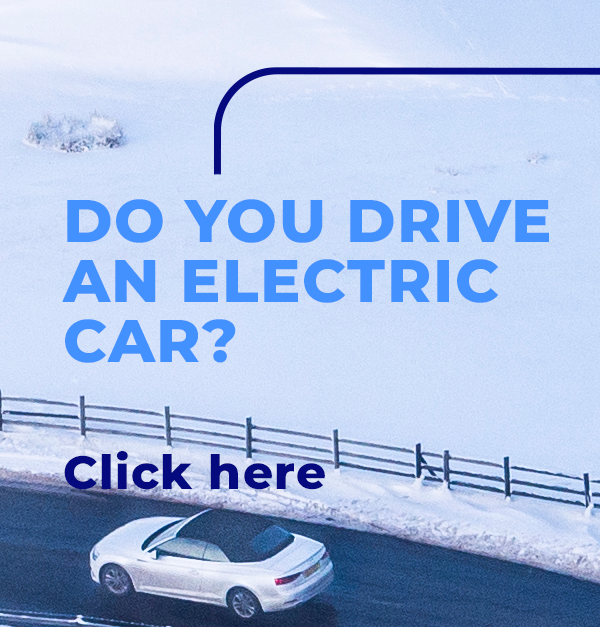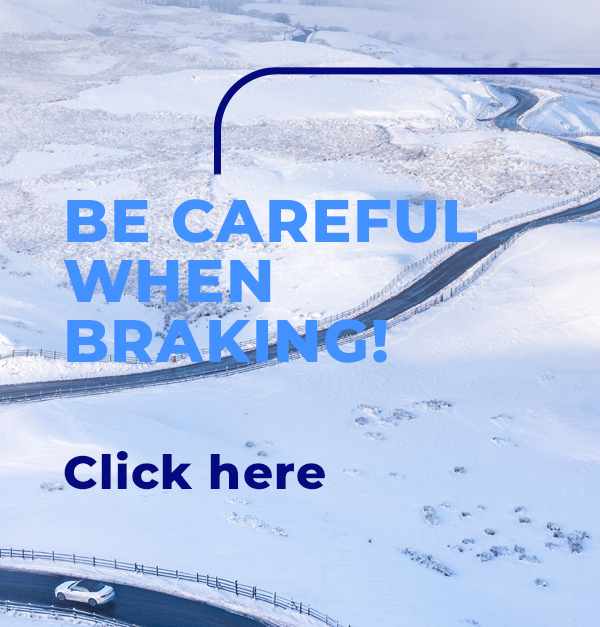Check your vehicle before you leave!
The tire pressure - this must be higher if the vehicle is heavily loaded (see the vehicle manual). Remember to check the pressure of the spare tire before you go on holiday.
The lights - Check whether the front, side and rear lights, the indicators and the headlights work well and are free from snow.
The tire grooves - get your tires changed if the profile depth is less than 3mm on winter tires
The fluids - check the gauges for cooling fluids on a regular basis and also check the oil gauge. Don’t forget, you can perform those actions only when the engine is cold.

Fighting frost
- Fill the windscreen washer reservoir and the cooling system of your vehicle with liquid anti-freeze.
- Protect your windscreen: place protection on your windscreen to reduce the chances of a frozen windscreen.
- Handbrake: in the event of overnight frost, do not use the handbrake on a flat road or a gentle slope. Engage the first or the rear gear instead. In this way, you will avoid blocking the brake.
- Winter tires: make especially sure that your vehicle is fitted with winter tires. They are performing better when the temperatures is lower than 7 degrees Celsius.
- Remove the snow and the ice from the windscreen and windows, the mirrors, the roof and the lights on your vehicle. Shake the snow off your shoes to lower the chances of your feet slipping on the pedals.
- Use a plastic ice scraper or a defrosting spray to remove ice from your windscreen and windows. Make sure you always keep it with you , just in case your door freezes shut, and you can’t get into your vehicle.
- Check the battery because often is the cause of engine-start-up problems when temperatures are cold. Have your battery checked in due time and replace it as necessary. If you do have problems starting your car, make sure you turn off everything that’s unrelated to starting the vehicle, such as the radio and the lights.
- The right way to start your engine - it’s better to make several short attempts to start than a single long one. An attempt that lasts too long may damage your battery.

1. Warming up your engine. There is little benefit to warming up your engine before driving. Even in freezing temperatures, your engine will be properly warmed up after just a few kilometers. Leaving the vehicle standing still with the engine idling just accelerates wear-and-tear on the engine while hurting the environment. It’s better to start the engine and begin driving immediately at a normal speed.
2. Pressing the acceleration pedal when starting the engine: for the new vehicles if you give the engine gas when you start it, you disrupt the electronic fuel injection and ignition process
3. Using warm water to defrost the windows and windshield. The temperature difference is enough to crack the windshield. And the water you pour on the windows can freeze.
4. Using windshield wipers to remove ice: this damages your windshield wipers and leaves mush you can’t see through all over the windshield!
5. Forcing the doors open. Are your doors stuck? Don’t pull on them because you’ll tear the rubber loose. Instead, push your doors in.


Drive safe!
Turn on your low beam headlamps when you’re driving. They are brighter than daytime running lights. Plus, when your headlamps are on, the rear lights turn on and make your vehicle much more visible.
No cruise control - when you’re driving in winter weather, you always need to be in complete control of your vehicle. So, don’t use the cruise control.
The driving behaviour - keep a distance from the vehicle in front that’s appropriate for your speed and braking distance, limit your use of the accelerator, brake and clutch, avoid sudden steering movements and keep your revs low. Test the condition of the road surface. Drive at low speed and carefully check how slippery it is.
Unforeseen issues may occur, but it's important to act calmly. Please contact ALD Automotive at +40 21 301 4959.
Disclaimer: All the information presented in the above article are provided only for information and ALD Automotive will not asume any legal responsibility regarding the undertanding and aplicability of those tips.